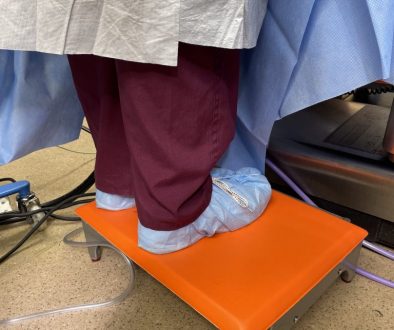What contributes to and worsens WRMSD in surgeons?
The term “ergonomics” refers to the scientific study of human work. Over the last century, Industrial ergonomics has identified many principles of good ergonomic design in order to mitigate risk factors in the work environment, and hence reduce the risks of injury.
Despite these advances, the surgical work environment remains largely unchanged, at least for the surgeon. At least some of the blame for this lies with us as a profession. There is a woeful lack of knowledge regarding good OR ergonomics throughout our training and practice. As a result, it is not uncommon for us to violate multiple basic ergonomic principles on a daily basis. We hold non-neutral postures for extended periods of time and increase the static loads on our spines with adjuncts such as headlights and loupes. Our work also inherently involves repetitive motions. However, there is more to the story than this.
Ever wonder why we don’t feel pain (at least in the early stages of injury) while actually operating, but rather at the end of the day? Adrenaline and extreme focus are clearly involved, but so is the surgical culture of pushing through, foregoing breaks and minimizing one’s discomfort – all for the good of the patient.
Compounding all of this is the fact that the OR environment has several constraints that act as barriers to improved ergonomics. The workspace and work is hard to standardize because each patient and their anatomy is unique (and immutable). OR time is money and longer operative times are associated with poor outcomes. This time pressure also likely plays a factor in surgeons’ reluctance to take breaks. In addition, surgical instruments and devices are not designed with optimal ergonomics in mind, but rather to meet environmental and regulatory (FDA) demands. This means that a non-disposable instrument has to be designed using materials and geometry that allows for easy cleaning, not with the intent of avoiding injury to the end-user. Last, but not least, the digitalization of our tasks outside the OR (charting on EMRs) has added the strains of poor office ergonomics to our OR ergonomics woes.
To learning more about factors that increase the risk for WRMSD, invite Dr. Lal to speak at your next conference.




